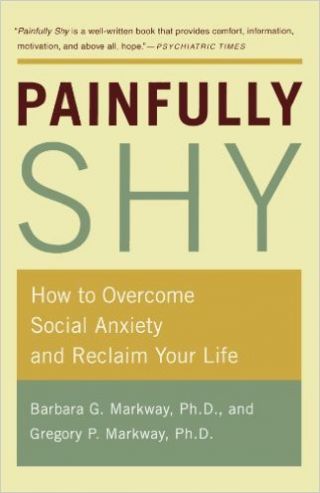Fear
Face Your Fear, Change Your Life
Facing your fear using this powerful approach can change your life.
Posted September 18, 2015

Facing your fears can be powerful, especially when you stay in the situation long enough to learn that you can cope with it and that a catastrophe isn't likely to occur. In clinical terms, this process is called "exposure" or “exposure therapy."
Most clinical research studies have shown that to overcome fear, the treatment process must include an exposure component. You can't simply sit in the therapist’s office exploring how and why you developed your fears; you have to confront them head on.
How does exposure therapy really work?
Let me introduce you to Jean, a woman who came to see me because of a disabling phobia of heights. Jean couldn't attend meetings past the fifth floor of an office building. She selected her doctors on the basis of where their offices were situated. She even offended several friends because she wouldn't attend social functions in their high-rise apartments.
When confronted with heights, she experienced physical symptoms of anxiety, such as racing heart rate, sweating, shaking, and sometimes full-blown panic attacks. She also experienced fearful thoughts, such as “What if I fall?, "What if I jump?” or, “What if I pass out?” These are common thoughts associated with a height phobia.
She’d battled her fear for years. She finally decided to seek help because her oldest son was going away to college and he was assigned to the 14th floor of a dormitory. She desperately wanted to attend parents’ weekend without having to worry about her fear of heights.
Much of my work with Jean took place outside the therapy office so she could face her fear, gradually, in real life. We often met at a nearby 21-story hotel. The hotel had a glass elevator in the center of the lobby, and each floor had an interior balcony with a walk-way circling around and overlooking a large atrium.
Jean and I picked the sixth floor to begin the process. This level would arouse her anxiety to a moderate degree without completely overwhelming her. Starting slowly also increased her chances for success.
We rode the elevator together up to the sixth floor. As we got off, I asked Jean to rate her anxiety on a scale of 0 to 10, with zero being completely relaxed and 10 being a severe panic attack. She rated her level at an eight. Interestingly, despite her feeling quite anxious on the inside, she appeared calm. I pointed this out to her and she was shocked. "I thought everyone could see what a nervous wreck I am," she said.
As we walked around the hotel, I periodically asked Jean to rate her anxiety level. By the time we made our way around the hallway one time, her level had dropped to six. We continued walking until her level had dropped to three. I coached her as we went, reminding her to focus on taking deep breaths. I also encouraged her to walk as "normally" as possible. She tended to clutch the railing as if her life depended on it.
Next, Jean repeated this entire procedure while I waited in the lobby. This was more difficult for her as I represented a safety net of sorts, but she wanted to try. By the time she got back to the lobby, she was beaming, feeling confident she could move on to the seventh floor.
Over the course of about six weeks, Jean and I worked our way up the hotel. Later, we moved on to other tall buildings. In addition, we met in my office periodically to process what she was learning. I wanted to know how her thoughts and beliefs were changing, and how her body was reacting physically to the exposure challenges.
Here are some things Jean reported gaining from her exposure therapy:
- I learned I can function when I'm feeling anxious. I used to think I wouldn't be able to walk if I felt so dizzy and shaky.
- I learned I won't pass out from anxiety.
- Anxiety goes away with time. It doesn't last forever.
- I don't like feeling anxious, but I can tolerate it now. I think my body got used to those weird sensations.
- I know it's highly unlikely that I would fall or jump. That's just my anxious mind playing tricks on me.
- Having this phobia doesn't mean I'm weak or crazy. Most people have something they have to cope with.
Jean worked hard for several months, and her work paid off. She was able to visit her son at college on parents’ weekend. She teased later that maybe she would've been better off not seeing his dorm room, given how messy it was!
From Jean's example, you can see that the key steps in facing a fear is to break the process into steps, go slowly, and be persistent. I hope this example has inspired you to face your own fears. Remember, it's simple, but not always easy. Seek outside help if you need to.
Join me on Facebook and Twitter.

Painfully Shy is now available on Kindle. Here's a link to all my books.
I am the co-author of Dying of Embarrassment, Painfully Shy, and Nurturing the Shy Child. Dying of Embarrassment: Help for Social Anxiety & Phobia(link is external) was found to be one of the most useful and scientifically grounded self-help books in a research study published in Professional Psychology, Research and Practice. I’ve also been featured in the award-winning PBS documentary, Afraid of People.




